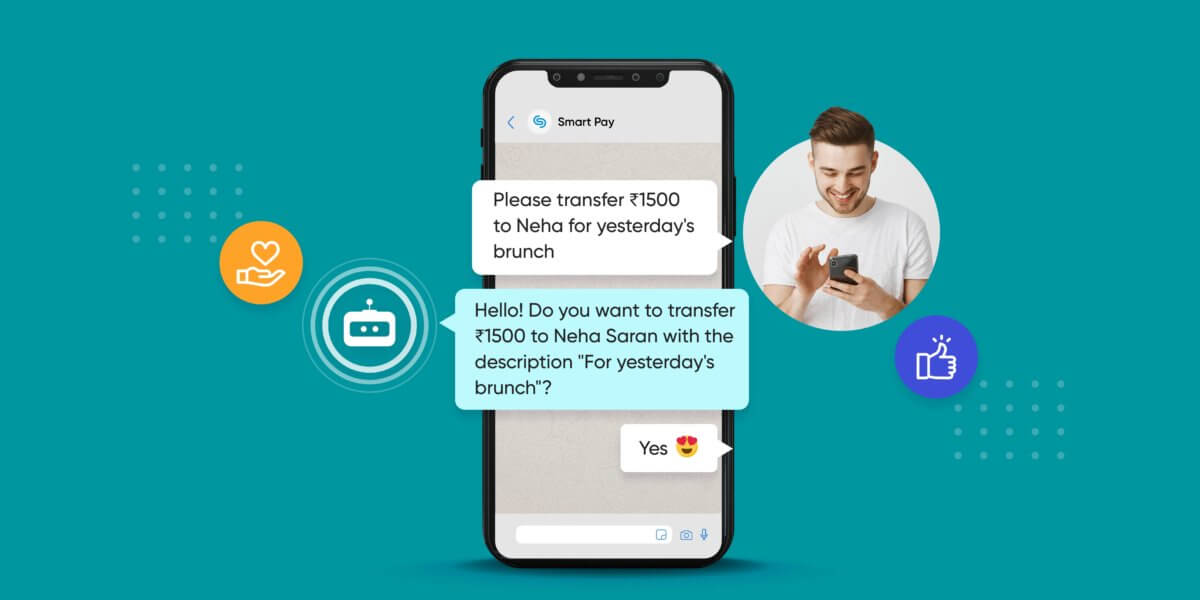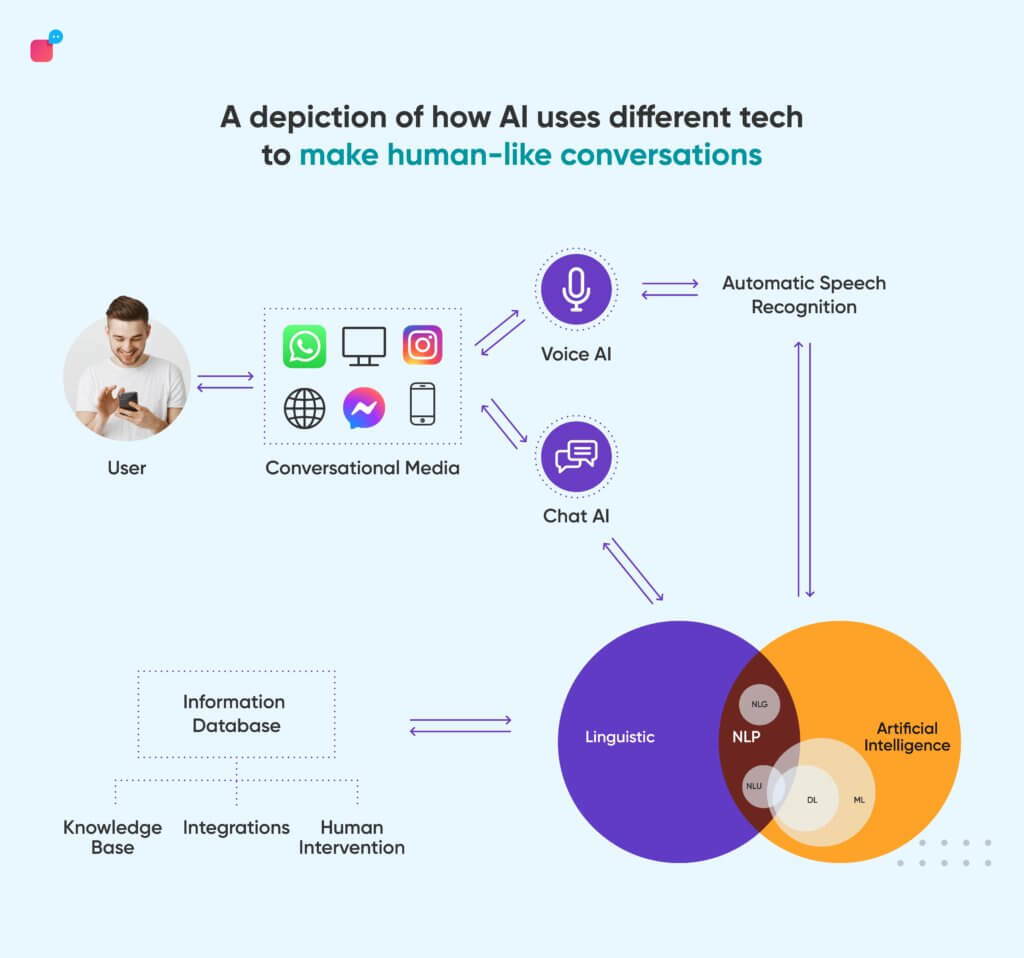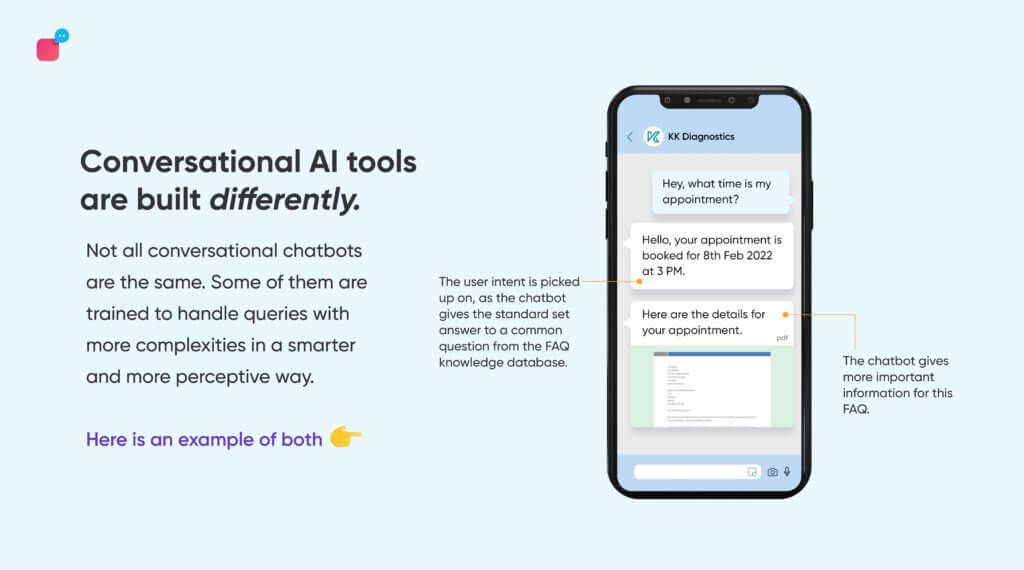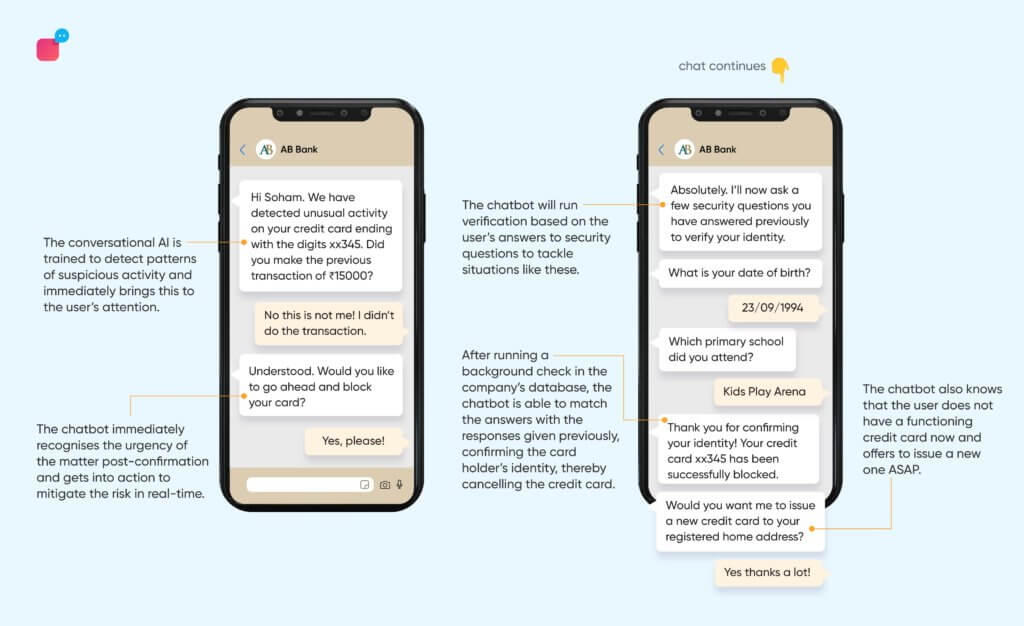What Makes Human to Machine Communication Natural?

What Makes Human to Machine Communication Natural?
Engagement takes a high jump when a user interacts with an AI that’s smart, perceptive, and quick. Here’s how conversational AI makes human-to-machine communication human-like and natural.
Conversational AI is an umbrella term for the tools and technologies that enable machines to understand and replicate human interactions.
From gauging customer intent to responding to voice commands – it offers a rich suite of functionalities that allow applications to conduct meaningful and engaging conversations, at scale.
Hence, it comes as no surprise that many businesses believe conversational solutions are a key element of their customer engagement strategy.
Such resounding success may make one wonder, how has AI changed the way humans communicate? And can AI communicate like humans?
What gives conversational AI an edge in human-to-machine communication?
While the mention of conversational AI often conjures instances of automated chatbots, its scope extends beyond text. If anything, it subsumes voice, text, behavioural cues, and every other aspect that makes interactions human-like. And so, when you say chatbots, voice assistants, or virtual agents, they are all essentially conversational AI solutions!

Such a holistic approach to communication is made possible through the amalgamation of various technology components, such as:
- Deep Learning: A subset of Machine Learning (ML) pertaining to algorithms inspired by the functioning and composition of the human brain.
- Natural Language Processing: A blend of computer science, Artificial Intelligence (AI), and linguistics to enable machines in processing human languages.
- Natural Language Understanding: A subfield of NLP that involves the comprehension of the structure and meaning of human language.
- Voice Recognition: The technology by which machines can receive and interpret sounds, words, or phrases spoken by humans.
- Cognitive Computing: An automated framework that simulates human thought processing paired with self-learning and self-training modules.
As a result of these inter-disciplinary and cross-sectional technologies, conversational AI manages to mimic human intelligence with natural and contextual conversations. And it makes human to computer communication sound more natural.
Human to Machine Communication Examples: How AI communicates as humans
- Understand the user’s motivation or intent behind the question and respond to them accurately, even if the user’s input is not coherent.
- Identify emotions related to words, phrases or even emoji to recognise users’ sentiment. This allows them to prioritise a chat and alert a human agent.
- Personalise communication by adding user’s data at relevant places such that the user doesn’t feel like just another ticket number to the company.
- Identify words from different languages and give users the option to change the language of communication, because every user is different.
- Carry forward context from one channel to another when the user changes the channel of communication. This contextual communication is what allows conversational AI to provide a true omnichannel experience.
Let’s understand how intelligence differs from AI to AI. Some conversational chatbots are built to handle basic FAQs, while others are trained to understand more complex user intents. Let’s see an example of how AI is used in communication.

Now, here’s an example of conversational AI trained to handle more complicated tasks.

How can conversational AI replicate humans to engage customers?
Inputs from various sources indicate that the volume of interactions handled by conversational AI solutions increased by 250%, regardless of the industry. Such a surge reflects its competency in handling customer interactions. But how does it bring to par human-to-machine communication with human-to-human interactions? Here’s a look:
1. Building with empathy
The greatest critique of text-based engagement is that the messages are often scripted and the flow is rule-based. Conversational AI overcomes these pitfalls to conduct genuine and meaningful conversations thanks to NLP, sentiment analysis, and the like.
Your voicebot can even detect the tone of your speaker’s voice. Happy? Your voicebot will respond as chirpily. Angry? The voice AI will pick up on it and route the ticket to a live agent.
While voice AI still has a long way to go before it can always decode emotion in a person’s voice, a well-trained voicebot can get the job done. As a result, empathetic AI can engage customers while acknowledging and responding to their emotions.
2. Opening doors on multiple channels
The cross-channel capabilities of conversational AI empower businesses to meet customers on their preferred platform. In addition to the convenience it brings, an omnichannel approach centralises communications. It avoids data silos even if the customer chooses to switch channels. That means, context is carried forward, even if the user moves from one channel to another mid-conversation.
As a result, the customer wouldn’t have to recite the same information multiple times. Their experience becomes more consistent and engaging, similar to an experience between a user and a human agent.
3. Going inclusive with multilingualism
ما هي حالة استرداد أموالي؟ What is my refund status? Mera refund status kya hai?
A conversational AI fluent in Arabic, English, and Hindi will attach the same user intent to all these three questions. That’s how a multilingual chatbot gives users the freedom to converse in the language they are comfortable with. It can use its linguistic prowess to gain contextual awareness and respond accordingly.
By eliminating language barriers, businesses can not only heighten customer engagement but also foster deeper customer relationships.
4. Using past data to refine AI
The best answer to refining a conversational AI lies in history.
When you interact with another human, they speak with you based on all that they know about you, and your past conversations with them. Similarly, a conversational AI trained with all the past data will be able to hold natural, human-like conversations with you.
You can make use of proprietary data and historic logs to analyse past interactions and outcomes to improve your AI’s performance with each iteration. With training, your AI gets more refined and sophisticated in accurately understanding the user intent to respond accordingly.
5. Using CRM data to support conversations
Amongst the many integrations supported by conversational AI, its association with CRM proves to be most valuable as it is the key to personalisation. Having an in-depth understanding of the customer and their requirements allows conversational AI to step up engagement and make it more relevant and meaningful.
Here’s an example.
“I have not yet received my exchanged item” When a user presents the AI with this problem statement, the AI will run a check to see if there are any exchanges pending on the user’s account (by phone number matching) and come back to update “Your exchange order no. 4673 is delayed by a few days. Please expect to receive it by 19th Feb.” This kind of human-to-machine communication makes it more personalised and contextual, improving customer experience.
Closing thoughts on human to computer communication
The global conversational AI market is slated to grow at a CAGR of 21.8% and reach a valuation of $18.4B by 2026. In other words, the sector is growing at an accelerated rate as it augments business capabilities across industrial segments. As businesses turn more customer-centric, it is only a matter of time until they successful leverage conversational AI to engage rather than converse!
Verloop.io is disrupting the customer support space with conversational AI so you can not only talk to your customers but connect with them better. Built on solid ML datasets, our voice and chat AI comes with 100+ integrations so you can bring all your support operations into one place.








